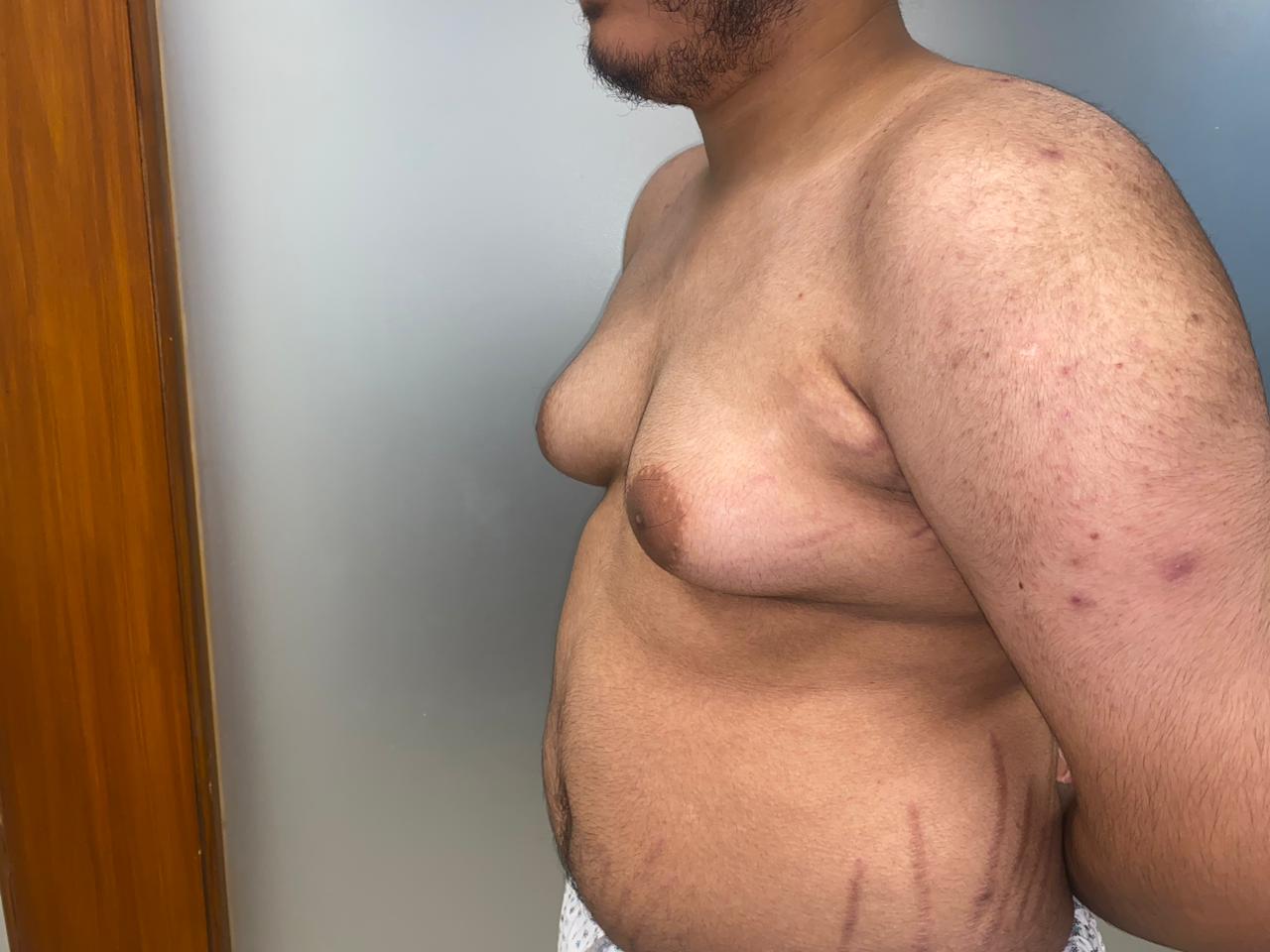AN OVERVIEW ABOUT
WHAT IS A GYNECOMASTIA?
Gynecomastia is a medical condition characterized by the enlargement of breast tissue in males. Often referred to as “man boobs,” gynecomastia can occur at any age and can affect one or both breasts. While it is not a life-threatening condition, it can cause physical discomfort, emotional distress, and impact a man’s self-esteem and body image.
The development of gynecomastia is primarily attributed to an imbalance of hormones, specifically an increase in estrogen relative to testosterone. Hormonal fluctuations during puberty are a common cause of temporary gynecomastia in many adolescent boys. In some cases, hormonal imbalances can persist into adulthood, leading to more prolonged or permanent breast tissue enlargement.
The treatment for gynecomastia depends on its underlying cause and severity. In cases where hormonal imbalances or medications are the root cause, addressing the underlying condition or adjusting medications may help reduce breast tissue enlargement. However, when gynecomastia persists and causes significant physical or emotional distress, surgical intervention may be considered. Gynecomastia surgery, also known as male breast reduction, involves the removal of excess breast tissue and fat to achieve a more masculine chest contour, restoring patients’ self-confidence and quality of life.
ARE YOU A CANDIDATE?
Determining whether you are a candidate for gynecomastia treatment is an essential step
in addressing this condition. If you are experiencing enlarged breast tissue in males,
commonly known as gynecomastia, and it is causing physical discomfort or emotional
distress, you may be a candidate for treatment. The first step is to consult with a
qualified plastic surgeon or medical professional who specializes in gynecomastia.
During the consultation, the doctor will assess your individual case, discuss your
medical history, and evaluate the severity of your gynecomastia.
Candidates for gynecomastia treatment typically include men who have tried lifestyle
changes, such as diet and exercise, without achieving desired results. If hormonal
imbalances or certain medications are causing the condition, addressing these underlying
factors may also be considered as part of the treatment plan.
Gynecomastia surgery, also known as male breast reduction, is a common treatment option
for candidates with persistent and bothersome breast tissue enlargement. The procedure
involves removing excess breast tissue and fat to achieve a more masculine chest
contour. Ideal candidates for surgery are generally in good overall health, have
realistic expectations about the results, and are committed to following post-operative
instructions for a successful recovery.

